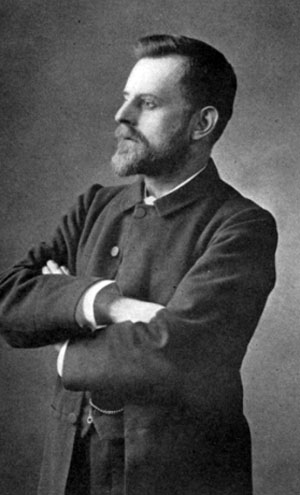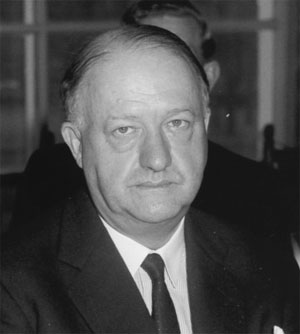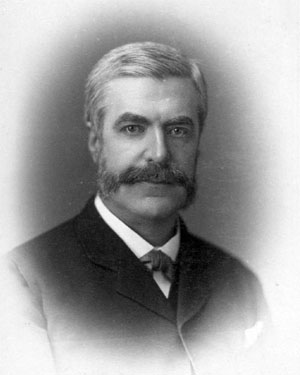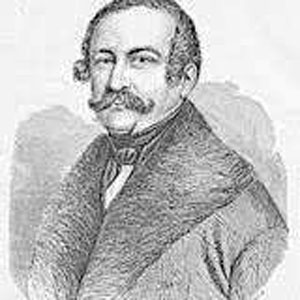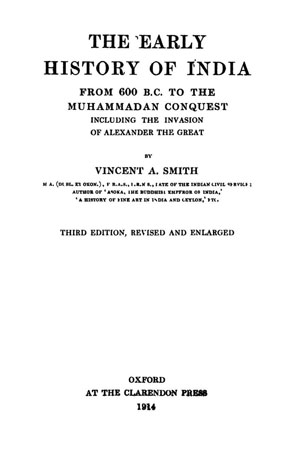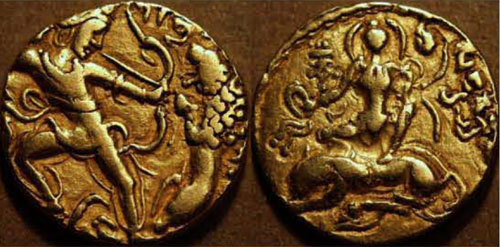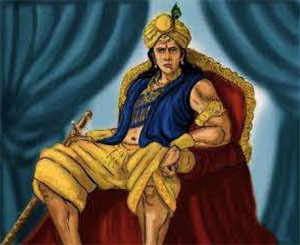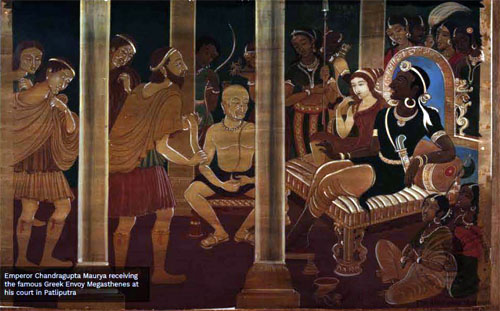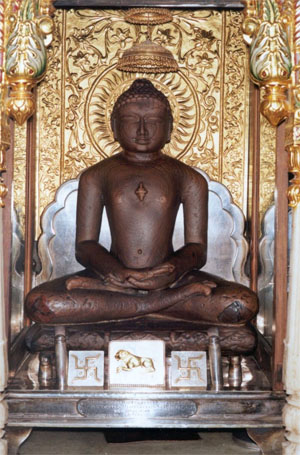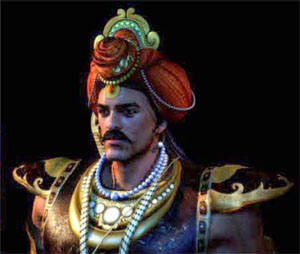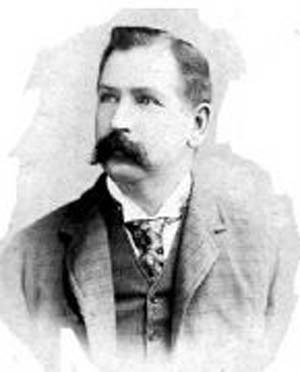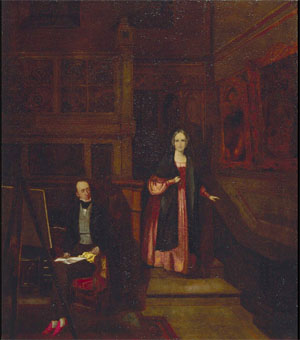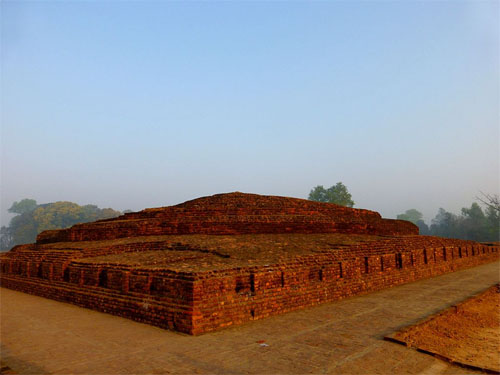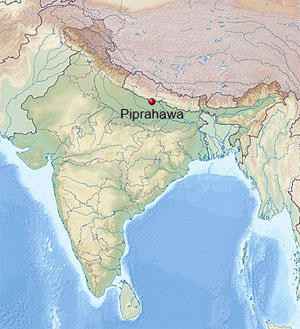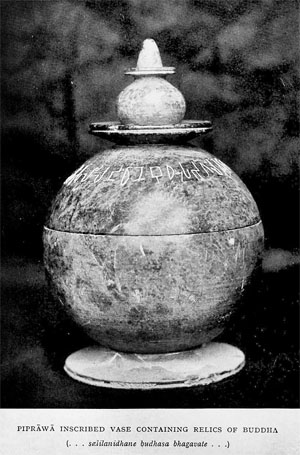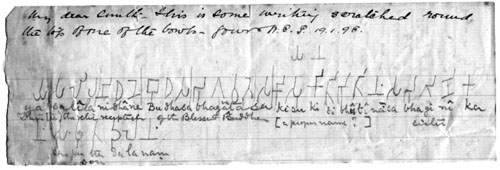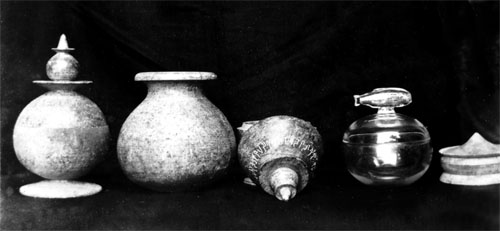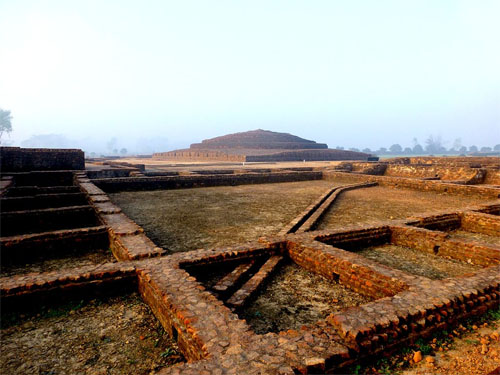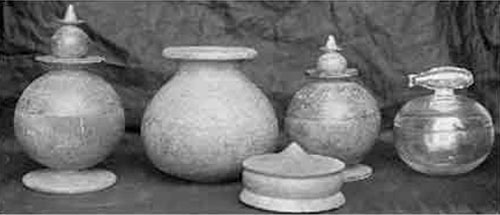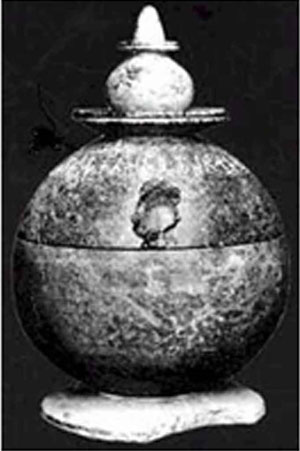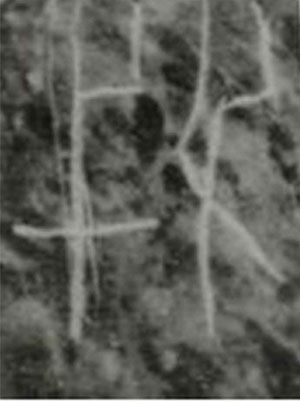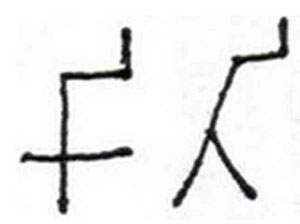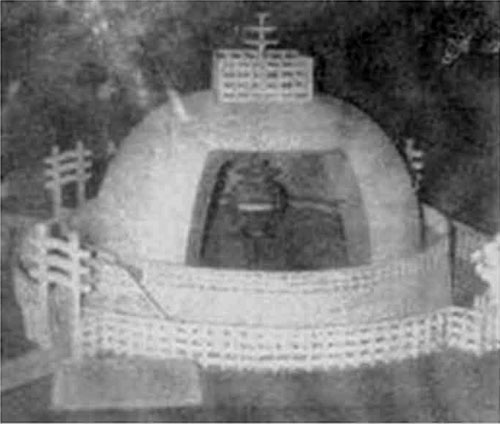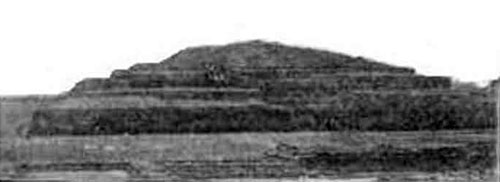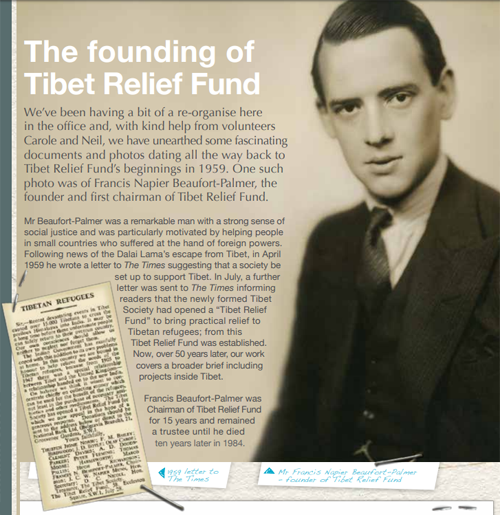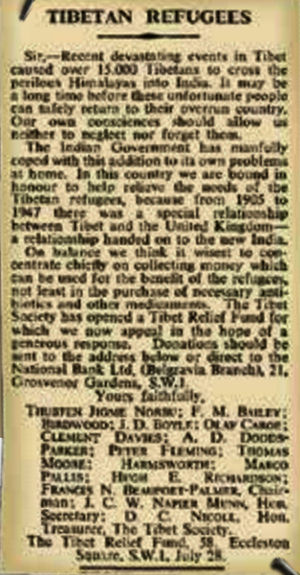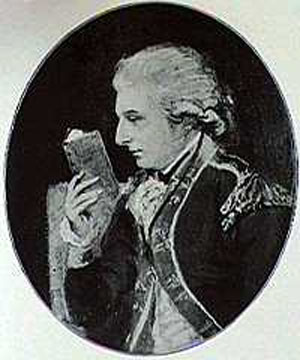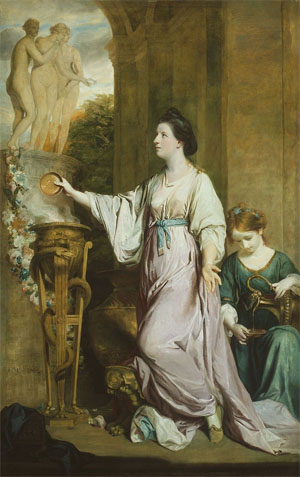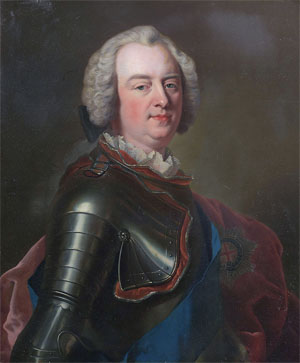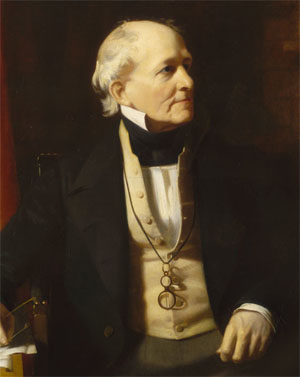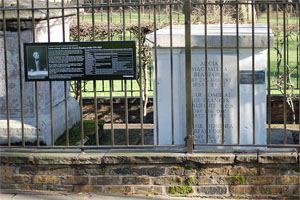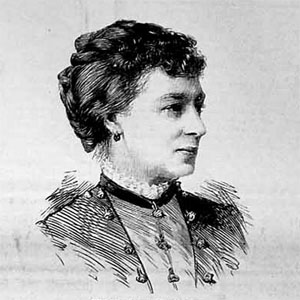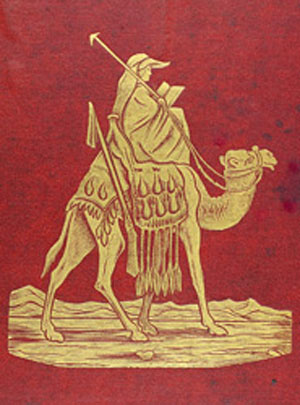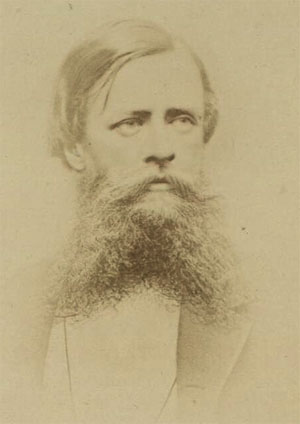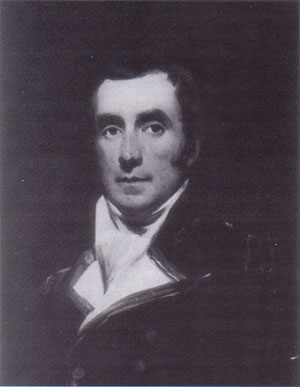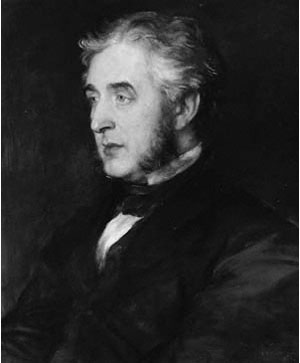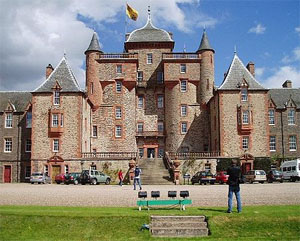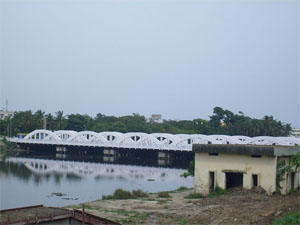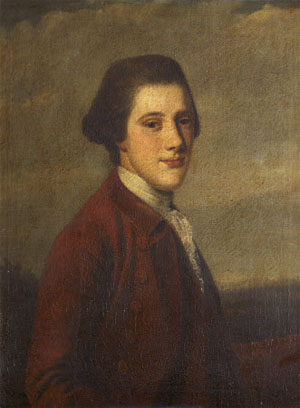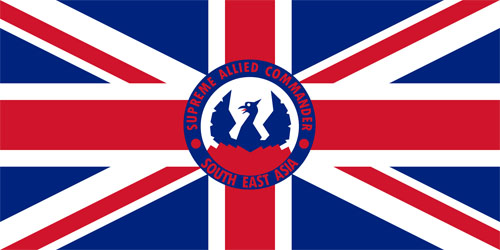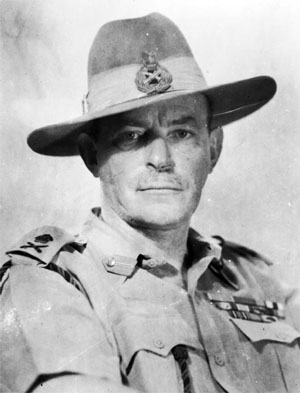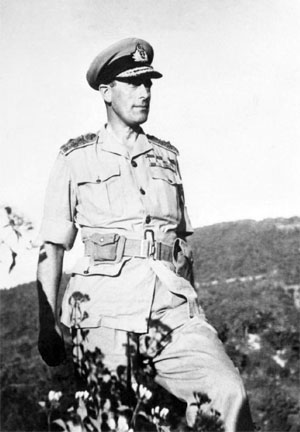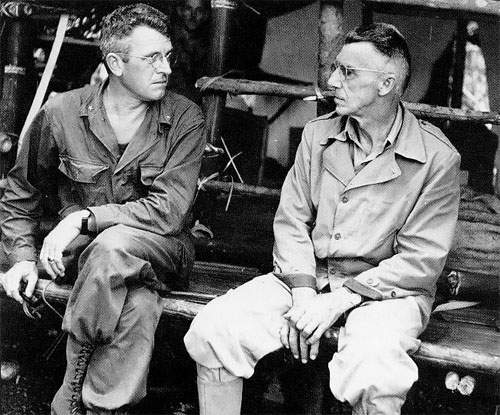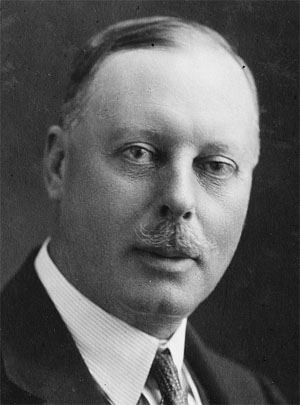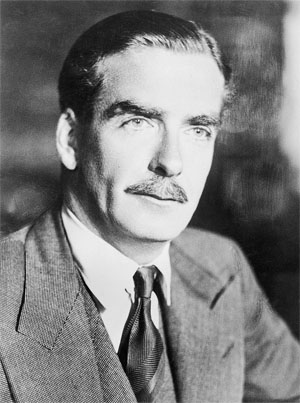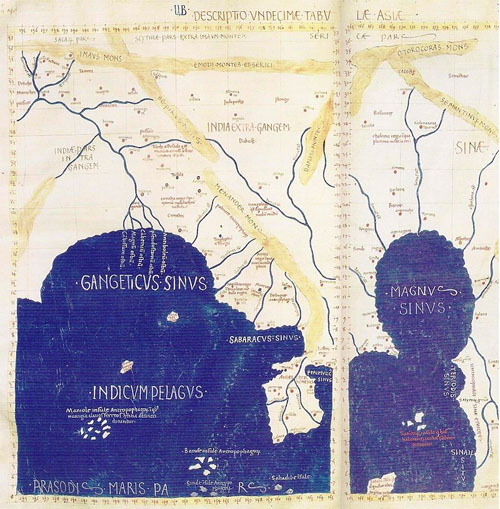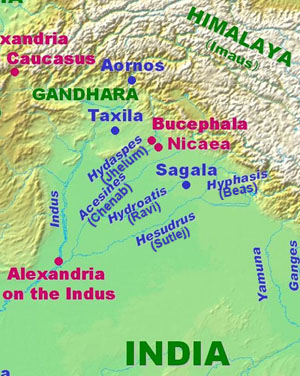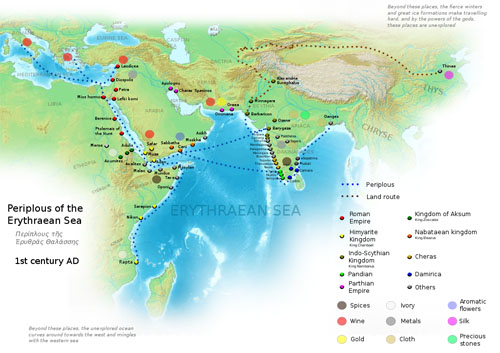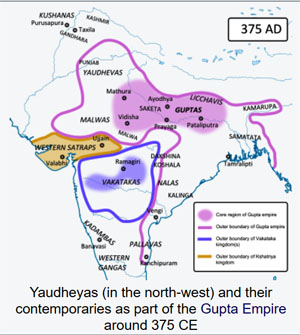by Wikipedia
Accessed: 7/1/21
Rahimatullah M. Sayani was an affluent Muslim belonging to the Khoja community who were disciples of the Aga Khan. He was associated with the Congress right from its inception. After Badruddin Tyabji, he was the second Muslim president of the Congress and presided over its twelfth annual session in Calcutta in 1896. In a candid presidential address, Sayani outlined, among other issues, the feelings of alienation among Muslims of India and attributed his reasons for the same. Sayani mentioned that before the advent of the British, the Muslims were the rulers of the country, with all the advantages of the ruling class. From the monarch to the courtiers to the landlords and officials, everyone was a co-religionist; the court language was theirs; they inherited positions of trust and responsibility that came along with emoluments and influence as their birthright. The Hindus, though part of the polity, were ‘tenants-at-will’ of the Muslims, were subservient and in awe of them.1 But a stroke of ill luck brought them down to the level of their Hindu countrymen. Being a ‘very sensitive race’ the Muslims resented this and would have nothing to do with their new rulers or their new fellow subjects, hitherto subordinates.
With the advent of English education in the country, the Hindus who were accustomed to learning a foreign language, as they had under their Muslim rulers, took to English naturally and easily. But the Muslims were yet to take to anything that ‘required hard labour and application, especially as they had to work harder than their former subjects, the Hindus’. They resented the idea of competing with those they considered inferior. The consequence of this was a turning of tables, with the Hindus becoming superior and the Muslim gradually being ‘ousted from their lands, their offices; in fact everything was lost, save their honour . . . they were soon reduced to a state of utter poverty. Ignorance and apathy seized hold of them while the fall of their former greatness rankled in their hearts’. The numbers proved Sayani’s claims. By 1867, eighty-eight Hindus and not a single Muslim had passed the MA and BA examinations.2
It is important to understand the long history behind this sense of alienation and separatism among a vast section of Muslims in India, particularly its leadership and clergy. This also becomes a prelude, setting the context in which Vinayak’s philosophy of Hindutva took birth. The political situation and the Hindu–Muslim equations prompted the urgency with which he composed such an exposition from the troubling confines of Ratnagiri prison. The leaderless disorientation in Hindu society, it being led in various directions and towards unrelated causes, and its own inherent divisions of caste and creed needed an intellectual response. Vinayak hoped to do that through his treatise.
There are numerous contradictions too. The same constitutional reforms that Vinayak endorsed in his petitions from Cellular Jail had provided the introduction for separate Muslim electorates. This move undoubtedly helped the later solidification of Indian politics on religious affiliation.
After the failure of the 1857 War of Independence, where reestablishing Bahadur Shah Zafar as the emperor of India was an important objective, the Wahabi movement of 1857–58, under Enayet Ali, did not join hands with the leaders of the 1857 movement. They fought for the establishment of a theocratic Islamic state, or dar-ul-Islam, in India. The Hindus were completely aloof from this long-drawn Wahabi struggle. After this, the Muslims as a community, by and large, did not take active part in any political organizations, including the INC. Being perceived as among the chief conspirators in 1857 further reduced their influence with the British and a general dejection gripped the community. At this point, Sir Syed Ahmed appeared as a beacon of hope. He took it as his mission to both mend fences between the Muslim community and the British, and also introduce the community to modern education. In fact, he published an entire tract, The Loyal Mohammedans of India, in which he took pains to explain that if there was any community in India that could be trusted and were fast bound with Christians, it was the Muslims of the country, who would be their staunch friends and loyalists. Inculcating this sense of loyalty to the British was one of the declared objectives of the Mohammedan Anglo-Oriental College that he set up in Aligarh in 1877. He vehemently opposed those of the community who were against the British—be it ulemas or those associated with the Congress. According to Syed, the Congress was fighting for a representative government on British lines—one in which the majority voice reigned, which would entail a fourth of the population comprising Muslims getting a short shrift. He never tired of emphasizing that India was a conglomerate of several nations and that the Muslims formed a distinctive unit. In a speech, he articulates this belief:In a country like India where homogeneity does not exist in any one of the fields (nationality, religion, way of living, customs, mores, culture, and historical tradition), the introduction of representative government cannot produce any beneficial results; it can only result in interfering with the peace and prosperity of the land . . . the aims and objects of the Indian National Congress are based upon an ignorance of history and present day realities; they do not take into consideration that India is inhabited by different nationalities; I consider the experiment which the Indian National Congress wants to make fraught with dangers and suffering for all the nationalities of India, specially for the Muslims. The Muslims are in a minority, but they are a highly united minority. At least traditionally they are prone to take the sword in hand when the majority oppresses them. If this happens, it will bring about disasters greater than the ones which came in the wake of the happenings of 1857 . . . the Congress cannot rationally prove its claim to represent the opinions, ideals, and aspirations of the Muslims.3
The thrust of his Aligarh movement was that Hindus and Muslims were separate entities with distinctive outlooks, conflicting interests, and in a way, separate nationalities. In fact, he was the first proponent of the ‘two-nation’ theory that was to have catastrophic results on the future of India. To quote Sir Syed:In whose hands shall the administration and the Empire of India rest? Now, suppose that all English, and the whole English army, were to leave India, taking with them all their cannon and their splendid weapons and everything, then who would be rulers of India? Is it possible that under these circumstances two nations—the Mahomedans and the Hindus—could sit on the same throne and remain equal in power? Most certainly not. It is necessary that one of them should conquer the other and thrust it down. To hope that both could remain equal is to desire the impossible and the inconceivable.4
Regarding the Congress demand that a section of the viceroy’s council should be elected by the people, Sir Syed debated:Let us imagine the Viceroy’s Council made in this manner. And let us suppose, first of all, that we have universal suffrage, as in America, and that all have votes. And let us also suppose that all Mohammadan electors vote for a Mohammadan and all Hindu electors for a Hindu member, and now count how many votes the Mohammadan member will have and how many the Hindu. It is certain that the Hindu member will have four times as many, because their population is four times numerous . . . and now how can the Mohammadan guard his interests?5
Thus, democratic representation or appointments based on competition would work to the Muslim detriment and result in a Hindu rule. As a result, British rule was in the best interests of the community, which should also stay away from political agitation and act as a counter to the agitating Hindus, Sir Syed postulated. That the Congress suffered from an acute lack of Muslim participation in its early years is seldom mentioned. Over the first twenty-one years, from 1885 to 1905, the average attendance of Muslim delegates in the first five sessions was 15 per cent; that fell to 5 per cent and below in the subsequent fifteen sessions.6 Muslims of Allahabad, Lucknow, Meerut, Lahore, Madras and other places passed resolutions condemning the Congress. Newspapers such as Mahomedan Observer, Victoria Paper, The Muslim Herald, Rafiq-i-Hind, and Imperial Paper spoke unequivocally against the Congress, as did a powerful Muslim organ of northern India—the Aligarh Institute Gazette.7 Riots over issues such as cow slaughter and processional music in front of mosques further widened the growing gulf between the two communities, which the British took advantage of.
For instance, Lord Curzon managed to win over Muslims who were initially opposed to the Partition of Bengal by convincing them that it was in their favour. Nawab Salimullah of Dacca, one of the most influential Muslim leaders of East Bengal, sided with the British. Many Muslims saw in the creation of the province of East Bengal and Assam a culmination of the dreams of the Aligarh movement—a separate Muslim unit within the Indian body politic. At a meeting held in Dacca on 30 December 1906, a resolution of prominent Muslim leaders upheld the Partition of Bengal plan and criticized the swadeshi movement raging against it.8
The British actively encouraged petitions from prominent Muslim leaders seeking employment of a due proportion from the community in government service, abolition of competitive examinations for the community for recruitment to services, appointments of Muslim judges in every high court and chief court, communal or separate electorates for municipalities and Muslim electoral colleges for elections to legislative councils. Correspondence between Viceroy Lord Minto’s private secretary, Colonel Dunlop Smith, and Muslim leaders clearly demonstrates this, where, among other things, he carefully orchestrates the whole plan of action:But in all these matters I want to remain behind the screen and this move should come from you. You are aware, how anxious I am for the good of the Musalmans, and I would, therefore, render all help with the greatest pleasure. I can prepare and draft the address for you. If it be prepared in Bombay then I can revise it because I know the art of drawing up petitions in good language. But Nawabsaheb, please remember that if within a short time any great and effective action has to be taken, then you should act quickly.9
This ‘engineered’ deputation submitted its memorandum to Lord Minto who gladly accepted it. Ramsay Macdonald, the future prime minister of Britain, too had reminisced: ‘The Mahomedan leaders are inspired by certain Anglo-Indian officials and that these officials have pulled wires at Simla and in London, and of malice aforethought sowed discord between the Hindu and the Mahomedan communities by showing the Muslims special favours.’10 The British press also picked up and played on this division of interests within the country and that the distinctive Muslim views entitled them to be constituted as a separate entity.
Elated by the favourable reception from the government, the Muslim leadership felt the urgent need of a political association to voice their demands better and also act as a counter to the Congress. There was no pan-Indian organization of the Muslims; all they had were loosely knit local units and groups of nawabs and eminent persons. Nawab Salimullah of Dacca advocated the idea of a Central Muhammadan Association whose chief goals were to support the British government and to look after the rights and interests of all the Muslims of India, in addition to acting as a bulwark against the Congress. The scheme was accepted, and at a meeting held on 30 December 1906, it was resolved that a political association called All India Muslim League should be established. At a meeting held in Karachi on 29 December 1907, the aims of the League were drawn— promoting pro-British feelings and loyalty towards the government among Muslims, protecting the rights and interests of Muslims of India and preventing rise of feelings of hostility towards other communities, without prejudice to the earlier mentioned objectives.11 There was opposition to movements like the Shivaji festival promoting a Hindu leader—more so one who fought against the Mughals—as a national hero was anathema.12 The secretary of the League declared:We are not opposed to the social unity of the Hindus and the Mussalmans . . . but the other type of unity (political) involves the working out of common political purposes. This sort of our unity with the Congress cannot be possible because we and the Congressmen do not have common political objectives. They indulge in acts calculated to weaken the British Government. They want representative Government, which means death for Mussalmans. They desire competitive examinations for employment in Government services and this would mean the deprivation of Mussalmans of Government jobs. Therefore, we need not go near political unity [with the Hindus]. It is the aim of the League to present Muslim demands through respectful request, before the Government. They should not, like Congressmen, cry for boycott, deliver exciting speeches and write impertinent articles in newspapers and hold meetings to turn public feeling and attitude against their benign Government.13
It was in this context of intense distrust and discord that we had earlier seen the letter from Ziauddin Ahmad—later vice chancellor of Aligarh Muslim University—to Abdullah Suhrawardy who was at India House in London, asking Muslims to refrain from participating in activities of Shyamji, Vinayak and other revolutionaries. The spirit of British loyalty and seeking distinctiveness from the Hindus and the Congress that Sir Syed had induced in the community was to remain for a long time with most leaders, barring a few exceptions. As Sir Percival Joseph Griffiths, a prominent businessman who also worked for Indian Civil Service largely in eastern India, noted: ‘Whatever may have been other effects of the foundation of the Muslim League, it set the seal upon the Muslim belief that their interests must be regarded as completely separate from those of the Hindus and that no fusion of the two communities was possible.’14
In its annual session held at Amritsar in December 1908, the Muslim League expressed vehement opposition to all the ‘mischievous efforts’ to unsettle the settled fact of the Partition of Bengal.15 In the Imperial Council in 1910, when Bhupendra Nath Bose raised the question of reversing the Partition of Bengal, members Shams-ul-Huda of Bengal and Mazhar-ul-Huq of Bihar strongly opposed the move. They warned that if the government meddled with this ‘beneficent measure, it would be committing an act of supreme folly and would create unrest and discontent where none existed now’.16 That the views of prominent leaders of the community remained unchanged is evident from Muhammad Ali’s speech as Congress president in 1923, in which he referred to the government’s policy of reversing the Partition of Bengal as an important cause for the alienation of the Muslims from the British government.17
Throughout 1907 and 1908, heated debates were held regarding separate electorates and the weightage that was proposed by the Muslim deputation and consented to by Viceroy Lord Minto. The Muslim leadership argued that owing to the vast social, cultural and religious differences between the two communities, they feared that a Hindu majority would not be able to deal with them suitably or represent them fairly. It was also pointed out that Muslims should get a greater representation in the different councils than was warranted by their numerical strength in the country’s population. The logic offered for this was rather perverse. The deputation had stated that Muslims had ruled India for 700 years before the British arrival and hence they had a natural claim to greater ‘political importance’, which should be reflected in the councils. They also maintained that the community had played a vital role in defending the country and this enhanced its importance further.
The Morley–Minto Reforms of 1909 not only awarded separate Muslim electorates, but also the number of their members in the council was much more than the numerical strength of their population. The seeds of discord and of being two separate nations had thus been sown several decades before the freedom movement took birth. Gopalkrishna Gokhale lamented:It was a commonplace of Indian politics that there can be no future for India as a nation unless a durable spirit of cooperation was developed and established between the two great communities . . . the union of all communities is no doubt the goal towards which we have to strive, but it cannot be denied that it does not exist in the country today and it is no use proceeding as though it existed, when in reality it does not 18 . . . over the greater part of India, the two communities had inherited a tradition of antagonism which though it might ordinarily lie dormant, broke forth into activity at the smallest provocation. It was this tradition that had to be overcome.19
-- Savarkar: Echoes from a Forgotten Past: 1883-1924, by Vikram Sampath
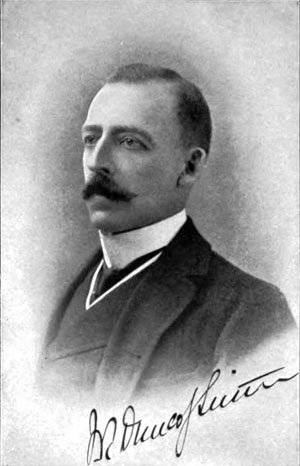
James Dunlop Smith
Lieutenant Colonel Sir James Robert Dunlop Smith KCSI KCVO CIE (24 August 1858 – 24 April 1921) was a British official in the Indian Army.
Life
He was born in Calcutta on 24 August 1858, son of George Smith (1833–1919), Principal of Doveton Boy's College. His siblings included Charles Aitchison Smith,
Lieutenant-Colonel Charles Aitchison Smith CIE (12 September 1871 – 26 January 1940) was a British Army and Indian Army officer and administrator in India.
Smith was born in Leith, the son of George Smith, a well-known writer on India. His brothers were Sir George Adam Smith and Sir James Dunlop Smith. His sister was the mother of the politician Rab Butler. Smith was educated at the Royal High School, Edinburgh, the University of Edinburgh, and the Royal Military College, Sandhurst.
Smith was commissioned into the Essex Regiment in November 1891 and was posted to the 2nd Battalion, serving in Cyprus and then India, where he transferred to the Indian Staff Corps in January 1896 and served in the Tirah Campaign of 1897. He was promoted Captain in October 1901. He joined the Indian Political Department in 1902 and served in the remote areas of Gilgit, Chilas, Chitral, and the Tochi, all in the Himalayas. He was promoted Major in November 1909.
In the First World War, he served in the Indian Expeditionary Force in France and Flanders with Hodson's Horse, fighting at Mons. He later transferred to Fane's Horse, and also served as an intelligence officer.
Returning to India in 1917, he served as Political Officer at Gilgit until 1920, although also serving in the Third Afghan War in 1919. He was then appointed Political Agent at Quetta until his retirement in 1923.
Returning to the United Kingdom, he was appointed publicity secretary of the Public Schools Cadet Association in 1926 and secretary of the British National Cadet Association in 1931, holding both posts until his death.
He was appointed Companion of the Order of the Indian Empire (CIE) in the 1920 New Year Honours.
-- Charles Aitchison Smith, by Wikipedia
George Adam Smith ...
The Very Reverend Sir George Adam Smith, FRSE, FBA (19 October 1856 – 3 March 1942) was a Scottish theologian.
Life
He was born in Calcutta, where his father, George Smith, C.I.E., was then Principal of the Doveton College, a boys' school in Madras. His mother was Janet Colquhoun Smith (née Adam). By 1870 the family had returned to Scotland and were living at Scagore House in Seafield, Edinburgh.
He was educated at Edinburgh in the Royal High School.
He then studied Divinity at the University of Edinburgh and the New College, graduating MA in 1875.
After studying for summer semesters as a postgraduate at the University of Tübingen (1876) and the University of Leipzig (1878) and travelling in Egypt and Syria. He was ordained into the Free Church of Scotland in 1882 and served at the Queen's Cross Free Church in Aberdeen.The Free Church of Scotland was a Scottish denomination which was formed in 1843 by a large withdrawal from the established Church of Scotland in a schism or division known as the Disruption of 1843. In 1900 the vast majority of the Free Church of Scotland joined with the United Presbyterian Church of Scotland to form the United Free Church of Scotland (which itself mostly re-united with the Church of Scotland in 1929). The House of Lords judged that the minority continuing after the 1900 union were entitled to all the assets. While the denomination clearly had a starting date, in their own eyes their leaders had a legitimate claim to an unbroken succession of leaders going all the way back to the Apostles.
The minority of the Free Church of Scotland who continued outside the union of 1900, retained the title the Free Church of Scotland.
Origins
The Free Church was formed by Evangelicals who broke from the Church of Scotland in 1843 in protest against what they regarded as the state's encroachment on the spiritual independence of the Church. Leading up to the Disruption many of the issues were discussed in Hugh Miller's widely circulating newspaper The Witness. Robert Candlish was influential perhaps second only to Thomas Chalmers in bringing about the Disruption.
The Disruption of 1843 was a bitter, nationwide division which split the established Church of Scotland. It was larger than the previous historical secessions of 1733 or 1761. The evangelical element had been demanding the purification of the Church, and it attacked the patronage system, which allowed rich landowners to select the local ministers. It became a political battle between evangelicals on one side and the "Moderates" and gentry on the other. The evangelicals secured passage by the church's General Assembly in 1834, of the "Veto Act", asserting that, as a fundamental law of the Church, no pastor should be forced by the gentry upon a congregation contrary to the popular will, and that any nominee could be rejected by majority of the heads of families. This direct blow at the right of private patrons was challenged in the civil courts, and was decided (1838) against the evangelicals. In 1843, 450 evangelical ministers (out of 1,200 ministers in all) broke away, and formed the Free Church of Scotland.
Dr. Welsh, the Church of Scotland's Moderator, who preached, read a Protest and walked out.
Led by Dr. Thomas Chalmers (1780–1847), a third of the membership walked out, including nearly all the Gaelic-speakers and the missionaries, and most of the Highlanders. The established Church kept all the properties, buildings and endowments. The seceders created a voluntary fund of over £400,000 to build 700 new churches; 400 manses (residences for the ministers) were erected at a cost of £250,000; and an equal or larger amount was expended on the building of 500 parochial schools, as well as a college in Edinburgh. After the passing of the Education Act of 1872, most of these schools were voluntarily transferred to the newly established public school-boards.
Chalmers' ideas shaped the breakaway group. He stressed a social vision that revived and preserved Scotland's communal traditions at a time of strain on the social fabric of the country. Chalmers's idealised small equalitarian, kirk-based, self-contained communities that recognised the individuality of their members and the need for co-operation. That vision also affected the mainstream Presbyterian churches, and by the 1870s it had been assimilated by the established Church of Scotland. Chalmers's ideals demonstrated that the church was concerned with the problems of urban society, and they represented a real attempt to overcome the social fragmentation that took place in industrial towns and cities.
-- Free Church of Scotland (1843–1900), by Wikipedia
In 1892 he was appointed Professor of Hebrew and Old Testament subjects in the Free Church College at Glasgow. In 1900 (at its creation) he moved from the Free Church of Scotland to the United Free Church of Scotland.
In 1909 he was appointed Principal and Vice Chancellor of the University of Aberdeen, a post he held until his retirement in 1935. He was elected a Fellow of the British Academy in 1916, and was knighted in the same year.
He served as Moderator of the General Assembly of the United Free Church of Scotland in 1916-17. In 1917 he was elected a Fellow of the Royal Society of Edinburgh. His proposers were John Horne, Cargill Gilston Knott, Ben Peach and John Sutherland Black.[7]
He was appointed a Chaplain-in-Ordinary to King George V in 1933, and reappointed by King Edward VIII and King George VI.
From 1924 to 1938 he was Patron of the Seven Incorporated Trades of Aberdeen.
He died at home, "Sweethillocks" in Balerno south-west of Edinburgh on 3 March 1942. He is buried with his wife and children in the north-east corner of Currie Cemetery in south-west Edinburgh.
-- George Adam Smith, by Wikipedia
and the mother of Rab Butler.
Richard Austen Butler, Baron Butler of Saffron Walden, KG, CH, PC, DL (9 December 1902 – 8 March 1982), also known as R. A. Butler and familiarly known from his initials as Rab, was a prominent British Conservative politician. The Times obituary called him "the creator of the modern educational system, the key-figure in the revival of post-war Conservatism, arguably the most successful chancellor since the war and unquestionably a Home Secretary of reforming zeal." He was one of his party's leaders in promoting the post-war consensus through which the major parties largely agreed on the main points of domestic policy until the 1970s , sometimes known as "Butskellism" from a fusion of his name with that of his Labour counterpart Hugh Gaitskell.
Born into a family of academics and Indian administrators, Butler had a distinguished academic career before entering Parliament in 1929. As a junior minister, he helped to pass the Government of India Act 1935. He strongly supported the appeasement of Nazi Germany in 1938–39. Entering the Cabinet in 1941, he served as Education Minister (1941–45, overseeing the Education Act 1944). When the Conservatives returned to power in 1951 he served as Chancellor of the Exchequer (1951–55), Home Secretary (1957–62), Deputy Prime Minister and First Secretary of State (1962–63) and Foreign Secretary (1963–64)....
After retiring from politics in 1965, Butler was appointed Master of Trinity College, Cambridge.
-- Rab Butler, by Wikipedia
He was educated at Edinburgh University and the Royal Military College, Sandhurst.
Commissioned a Second Lieutenant in the 22nd Regiment 1879, Smith became a Lieutenant in the Indian Staff Corps in 1882. He was appointed Private Secretary to the Lieut-Governor of the Punjab, 1883, and Settlement Officer, Sialkot in 1887. He was then appointed Deputy Commissioner, Hissar, 1896; Director of Land Records and Agriculture, Punjab 1897; Famine Commissioner, Rajputana, 1899; member of Horse and Mule-Breeding Commission, India 1900; and Political Agent, Phulkian States and Bhawalpur, 1901.
Smith rose to become the Private Secretary to the Viceroy, Lord Minto, from 1905 to 1910. He died 24 April 1921.[1][2][3]
Family
Smith married Beatrice Clementia, eldest daughter of Sir Charles Umpherston Aitchison, in 1887. They had two daughters; she died in 1902.
Sir Charles Umpherston Aitchison KCSI CIE (20 May 1832 – 18 February 1896) was a Scottish colonial administrator who was Lieutenant Governor of the Punjab, then a province of British India. He founded Aitchison College, Lahore in 1886. He served as Chief Commissioner of the British Crown Colony of Burma from March 1878 to May 1880.
Education
Charles Umpherston Aitchison, born in Edinburgh on 20 May 1832, was the son of Hugh Aitchison of that city, by his wife Elizabeth, daughter of Charles Umpherston of Loanhead near Edinburgh. He was educated at the Royal High School and the University of Edinburgh, where he took the degree of M.A. on 23 April 1853. While a university student, Aitchison attended the lectures of Sir William Hamilton on logic and metaphysics.William received his early education at Glasgow Grammar School, except for two years which he spent in a private school at Chiswick in Kent,[1] and in 1807 went as a Snell Exhibitioner, to Balliol College, Oxford. He obtained a first class in literis humanioribus and took his BA in 1811 (MA 1814). He had been intended for the medical profession, however soon after leaving Oxford he gave up this idea, and in 1813 became a member of the Scottish bar, as a qualified advocate....
Two visits to Germany in 1817 and 1820 led to William's taking up the study of German and later on that of contemporary German philosophy, which was almost entirely neglected in British universities....
In 1829 his career of authorship began with the appearance of the well-known essay on the "Philosophy of the Unconditioned" (a critique of Victor Cousin's Cours de philosophie)--the first of a series of articles contributed by him to the Edinburgh Review. He was elected in 1836 to the University of Edinburgh chair of logic and metaphysics, and from this time dates the influence which, during the next 20 years, he exerted over the thought of the younger generation in Scotland....
Hamilton also prepared extensive materials for a publication which he designed on the personal history, influence and opinions of Martin Luther. Here he advanced so far as to have planned and partly carried out the arrangement of the work; but it did not go further, and still remains in manuscript.
-- Sir William Hamilton, 9th Baronet, by Wikipedia
He afterwards passed some time in Germany, where he studied the works of Fichte, and attended the lectures of Tholuck at the University of Halle.Immanuel Hermann Fichte; ennobled as Immanuel Hermann von Fichte in 1863; 18 July 1796 – 8 August 1879) was a German philosopher and son of Johann Gottlieb Fichte. In his philosophy, he was a theist and strongly opposed to the Hegelian School...
He also attended the lectures of Georg Wilhelm Friedrich Hegel, but felt averse to what he deemed to be his pantheistic tendencies. As a result of semi-official suggestions, based on official disapproval of his supposedly liberal views, he decided, in 1822, to leave Berlin, and accepted a professorship at the gymnasium in Saarbrücken. In 1826 he went in the same capacity to Düsseldorf. In 1836 he became an extraordinary professor of philosophy at the University of Bonn, and in 1840 full professor. Here he quickly became a successful and much admired lecturer. Dissatisfied with the reactionary tendencies of the Prussian Ministry of Education, he accepted a call to the chair of philosophy at the University of Tübingen in 1842 where he continued to give lectures on all philosophic subjects until his retirement in 1875 when he moved to Stuttgart.
-- Immanuel Hermann Fichte, by Wikipedia
Indian civil service
In 1855 he ranked fifth at the first competitive examination for the Indian Civil Service, and after spending a year in England in the study of law and oriental languages he landed at Kolkata (then Calcutta) on 26 September 1856. In March 1857 he was appointed an assistant in Hissár, then a district of the North-Western Provinces and in the following month was transferred to the Punjab, where he joined shortly after the outbreak of the Indian Rebellion of 1857. Owing to this transfer he escaped a massacre of Europeans which took place at Hissár on 29 May. His first station in his new province was Amritsar, and immediately after his arrival there he was employed under the orders of the deputy commissioner in carrying out the measures which were taken to prevent the Jalandhar mutineers from crossing the Beas River. Shortly afterwards he was appointed personal assistant to the judicial commissioner, in which capacity he compiled A Manual of the Criminal Law of the Panjáb (1860). While thus employed, he was much thrown with Sir John Laird Mair Lawrence (afterwards Baron Lawrence), with whose policy, especially on the Central Asian question, and on British relations with Afghanistan, he was strongly imbued during the remainder of his life. In 1892 he contributed a memoir of Lord Lawrence to Sir William Wilson Hunter's Rulers of India series.
In 1859 he joined the secretariat of the government of India as under-secretary in the political department, and served there until 1865, when, at the instance of Sir John Lawrence, then governor-general, in order that he might acquire administrative experience, he took up administrative work in the Punjab, serving first as a deputy-commissioner and subsequently officiating as commissioner of Lahore. In 1868 he rejoined the secretariat as foreign secretary, and retained that appointment until 1878.
As secretary Aitchison was extremely industrious and thorough in his work. He exercised a marked influence on successive governors-general, who regarded him as a wise and trusted adviser. During the earlier part of his service in the Indian foreign office he commenced the compilation of a valuable work entitled A Collection of Treaties, Engagements, and Sanads relating to India and neighbouring Countries; the first volume appeared at Calcutta in 1862, and eleven volumes were issued by 1892; each treaty is prefaced by a clear historical narrative. In 1875, he published a treatise on The Native States of India, with the leading cases illustrating the principles which underlie their relations with the British government. A staunch believer in the policy of masterly inactivity, he regarded with grave apprehension the measures which, carried out under the government of Lord Lytton, culminated in the Afghan war of 1878–9.
British Burma
Before the war broke out in 1878 he accepted the appointment of chief commissioner of British Burma. When holding that office he raised two questions of considerable importance. The first was the question of the opium trade as bearing upon Burma. The second had reference to the relations of certain English public servants with the women of the country. Neither of these questions was dealt with officially by Lytton's government; but with reference to the second the viceroy intimated semi-officially that he disapproved of a circular which Aitchison had issued, as mixing up morals with politics. After Aitchison's departure from the province both these questions were taken up by his successor, who received the support of Lord Ripon's government in dealing with them. The number of licensed opium shops was then reduced to one-third of those previously licensed, and the consumption of licit opium was reduced by two-fifths, involving a loss of revenue of four lakhs (400,000) of rupees. On the other question, the principle of Aitchison's circular, stopping the promotion of officers who continued the practice which he had denounced, was enforced.
The Punjab
In 1881 Aitchison left Burma, to become on 4 April 1882, lieutenant-governor of the Punjab. His government there was very successful, and — according to the Dictionary of National Biography - popular with all classes of the people. Amongst his major achievements in the field of public education, at this time, were the establishment of the Aitchison College and the University of the Punjab, both at Lahore. He was a staunch advocate of the policy of advancing indigenous Indians in the public service as they proved their fitness for higher posts and for more responsible duties. On this point, in connection with what is known as the Ilbert Bill, he advocated measures even more liberal than those proposed by Lord Ripon's government.
He had intended to leave India for good when his lieutenant-governorship came to an end in 1887, but being invited by Lord Dufferin to join the council of the governor-general and give the viceroy the benefit of his experience on the many questions which had to be dealt with consequent upon the annexation of Upper Burma, he returned to India for another nineteen months. During the latter part of his government of the Punjab he had discharged the additional duty of presiding over the public service commission, and this duty he continued to perform after joining the governor-general's council. He gave unremitting attention to this work, and by his influence over the somewhat heterogeneous body of which the commission was composed he induced them to present a unanimous report.
He retired and finally left India in November 1888. Early in the following year he settled in London, but subsequently moved to Oxford. In 1881 he was nominated Knight Commander of the Order of the Star of India, and in 1882 Companion of the Order of the Indian Empire. He received the degree of LL.D. from the university of Edinburgh on 24 February 1877, and that of honorary M.A. from Oxford University in 1895.[3]
Personal life
Aitchison, a religious man, was a supporter of Christian missions while in India, and after his retirement was an active member of the committee of the Church Missionary Society. He died at Oxford on 18 February 1896.
Aitchison married, on 2 February 1863, Beatrice Lyell, one of four daughters of James Cox (1808–1875), D.L., of Clement Park, Forfarshire, who was the senior partner of Cox Brothers and Co, owners of Camperdown Works in Lochee, Dundee. Their daughter Beatrice Clementia married British Indian Army official James Dunlop Smith.
-- Charles Umpherston Aitchison, by Wikipedia
References
1. Lionel Knight (2012), Britain in India, 1858-1947, Anthem Press, p. 76, ISBN 9780857285171
2. Sir James Robert Dunlop Smith, edited by Martin Gilbert (1966), Servant of India: A Study of Imperial Rule from 1905 to 1910 as Told Through the Correspondence and Diaries of Sir James Dunlop Smith, Longmans
3. Who's Who 1916
External links
• Portrait by George Fiddes Watt

